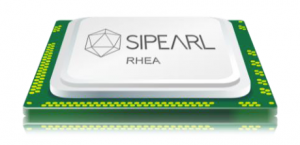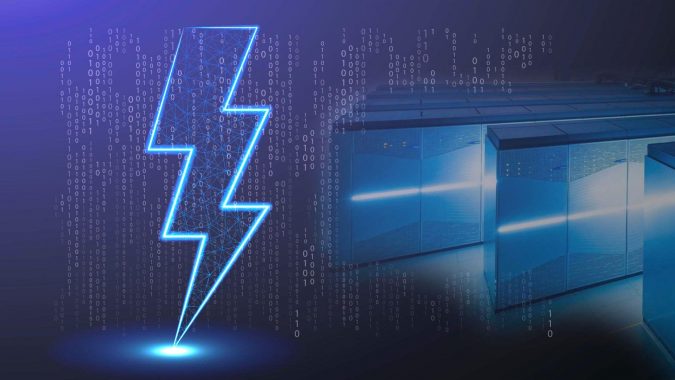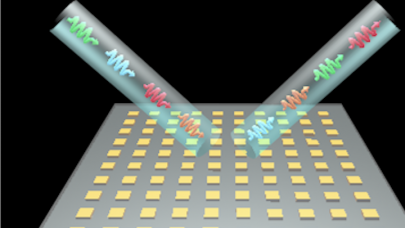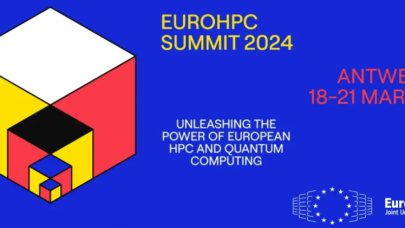The configuration of Europe’s first exascale supercomputer, Jupiter, has been finalized, and it is a win for Nvidia and a disappointment for x86 chip vendors Intel and AMD. The Jupiter supercomputer, which will cost €273 million to build, will pair SiPearl’s Rhea processor, which is based on Arm architecture, with accelerator technology from Nvidia.
The supercomputer is being built by the European High-Performance Computing Joint Undertaking (EuroHPC JU) and a consortium including Eviden and ParTec. Eviden is an Atos business focusing on advanced computing initiatives that include HPC and AI.
The Jülich Supercomputing Centre, which is near Munich, will host the system (Correction: Jülich Supercomputing Centre is close to Aachen, Munich is about 600 km or 375 miles away). The installation will begin in early 2024.
Specifically, the supercomputer’s main compute cluster will be based on Arm CPUs, and the initial configuration does not include x86. Six of the top 10 supercomputers in the world are based on x86 chips, and only one is based on Arm.
That is a big disappointment for Intel, which last year announced it would invest €33 billion to build a new chip factory and fund research and development initiatives in Europe. Intel’s CEO Pat Gelsinger also met with EU leaders in a bid to get more business in the region.
Jülich’s fastest system, JUWELS, was last featured in the Top500 list in November 2021 and is currently ranked 13. The fastest supercomputers in Europe are the third-ranked Lumi in Finland, which delivers a peak performance of 309 petaflops, and the fourth-ranked Leonardo in Italy, which peaks at 239 petaflops.
Jupiter was first announced last year and is designed to be a modular system in which multiple types of accelerators can be plugged into the core system.
The supercomputer is being built by almost the same cast of characters, including Atos (now Eviden) and system integrator Partec, responsible for the 44-petaflop JUWELS supercomputer, which was installed in 2020 with AMD’s Epyc 7402 chip.
The Jupiter will instead have SiPearl’s Arm processor based on Arm’s Neoverse V1 CPU design. SiPearl has designed the Rhea chip to be universally compliant with many accelerators, and it supports high-bandwidth memory and DDR5 memory channels.

Jupiter will have Nvidia’s Booster Module, an integrated system that includes the company’s GPUs and Mellanox interconnects. SiPearl has been working with Nvidia to connect its CPUs with Nvidia GPUs.
The current JUWELS Booster Module uses Nvidia’s A100 GPUs, and Jupiter could be upgraded to Nvidia’s H100 GPUs. Nvidia has not shared details of successors to H100, and Jupiter’s installation is due to begin in three months.
While Intel and AMD may be losers in the Jupiter deal, it does not preclude their chips from being used in the supercomputer. Jupiter’s modular design means that Jülich may opt to add GPUs, and less likely, CPUs, from those companies into modules that plug into the core compute system.
Intel worked extensively with SiPearl to bring OneAPI support for its Ponte Vecchio supercomputing GPUs to Rhea. SiPearl last year partnered with AMD to make Instinct GPUs compatible with Rhea chips.
Jülich is also building out its machine-learning and quantum computing infrastructure, which the supercomputing center hopes to plug in as accelerator modules hosted at its facility.
Arm, which recently became a publicly listed company, will get a feather on its cap as it looks to break the dominance of x86 in supercomputing. The world’s second fastest supercomputer, Fugaku, installed at the Riken Center for Computational Science, is based on an Arm processor from Fujitsu.
Europe is striving for hardware independence with homegrown CPU designs, so the selection of Rhea CPUs for Jupiter shouldn’t come as a surprise.
SiPearl, based in France, started developing Rhea with seed funding from the European Processor Initiative, which wants to develop open-chip designs that cut reliance on foreign chip technologies. The EPI is focused heavily on chip design based on the open-source RISC-V architecture.
SiPearl is a relatively new chip design company compared to the well-established Intel and AMD and is now under pressure to prove its chip will support the exaflops performance.
SiPearl chose Arm as it is well-established and ready for high-performance applications. Experts say RISC-V is many years away from mainstream server adoption. EuroHPC JU requested Jupiter suppliers to meet energy efficiency, performance, system stability, and programmability requirements.
Jupiter will run classic computing applications and is also designed for AI technologies such as large-language models. AI applications could involve creating simulations that hasten drug discovery or simulating weather problems to make predictions or solve problems related to climate change.
The exaflops performance is expected to be based on the Linpack benchmark. Nvidia, Google, and others have released debatable supercomputing AI benchmarks, often reporting performance in excess of one exaflop.
Top500 in 2021 tested the mixed-precision HPL-AI (High-Performance Linpack for Accelerator Introspection) benchmark, which propelled the total performance of Arm-based RIKEN to 2.0 exaflops, compared to 442 exaflops on conventional Linpack measurements.
Jupiter is also a big step forward in the EU’s effort to achieve computing independence and reduce its reliance on proprietary tech.
The European Commission last month passed the European Chips Act, which opened €43 billion in public funding for manufacturing, next-generation semiconductor technology, and research.
The regulation specifically opens up €2 billion for HPC and €1.67 billion for artificial intelligence. The HPC allotment is related to procuring and building out the supercomputing and quantum infrastructure within the EU.
However, Europe is still behind the US, China, and Japan in the race to build the world’s fastest supercomputers.
The U.S. is expected to host two exaflops supercomputers — Aurora at ORNL and El Capitan at the Lawrence Livermore National Laboratory — in the coming years, which will again put Europe behind. China has hinted that multiple ‘exaflops’ supercomputers are already or expected to go online.
Europe’s second exascale supercomputer will be up and running in France by the end of 2025. EuroHPC JU announced in June that the supercomputer will be hosted and operated by the Jules Verne consortium, which includes French institutions GENCI (Grand Equipement National de Calcul Intensif), the CEA (the Alternative Energies and Atomic Energy Commission), and Dutch national supercomputing center SURF.
Jupiter’s total cost is €273 million, over half that of the original €500 million budget. About half of the cost of standing up Jupiter is funded by the EuroHPC JU, and the remaining amount is funded by the German Federal Ministry of Education and Research and the Ministry of Culture and Science of the State of North Rhine-Westphalia.


























































